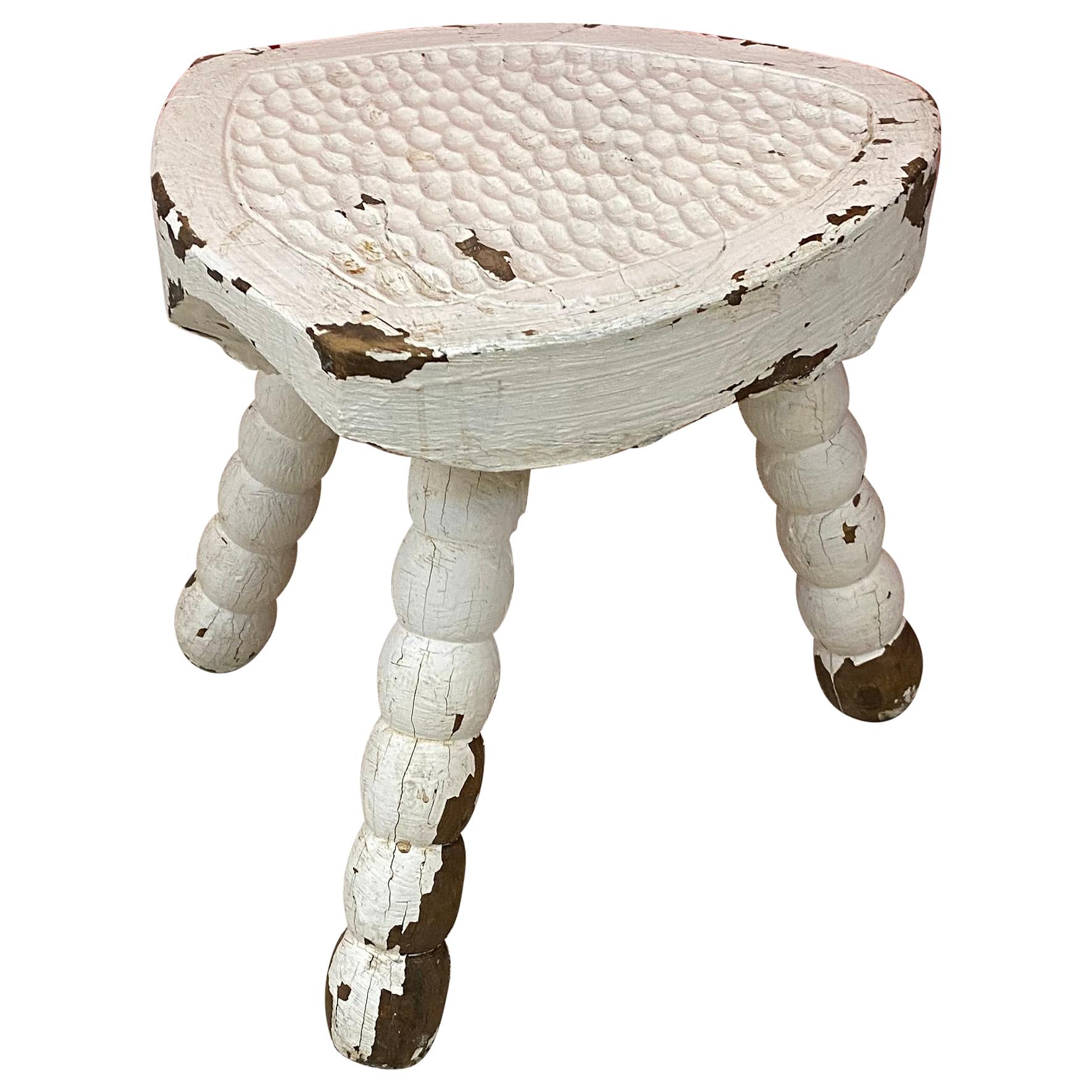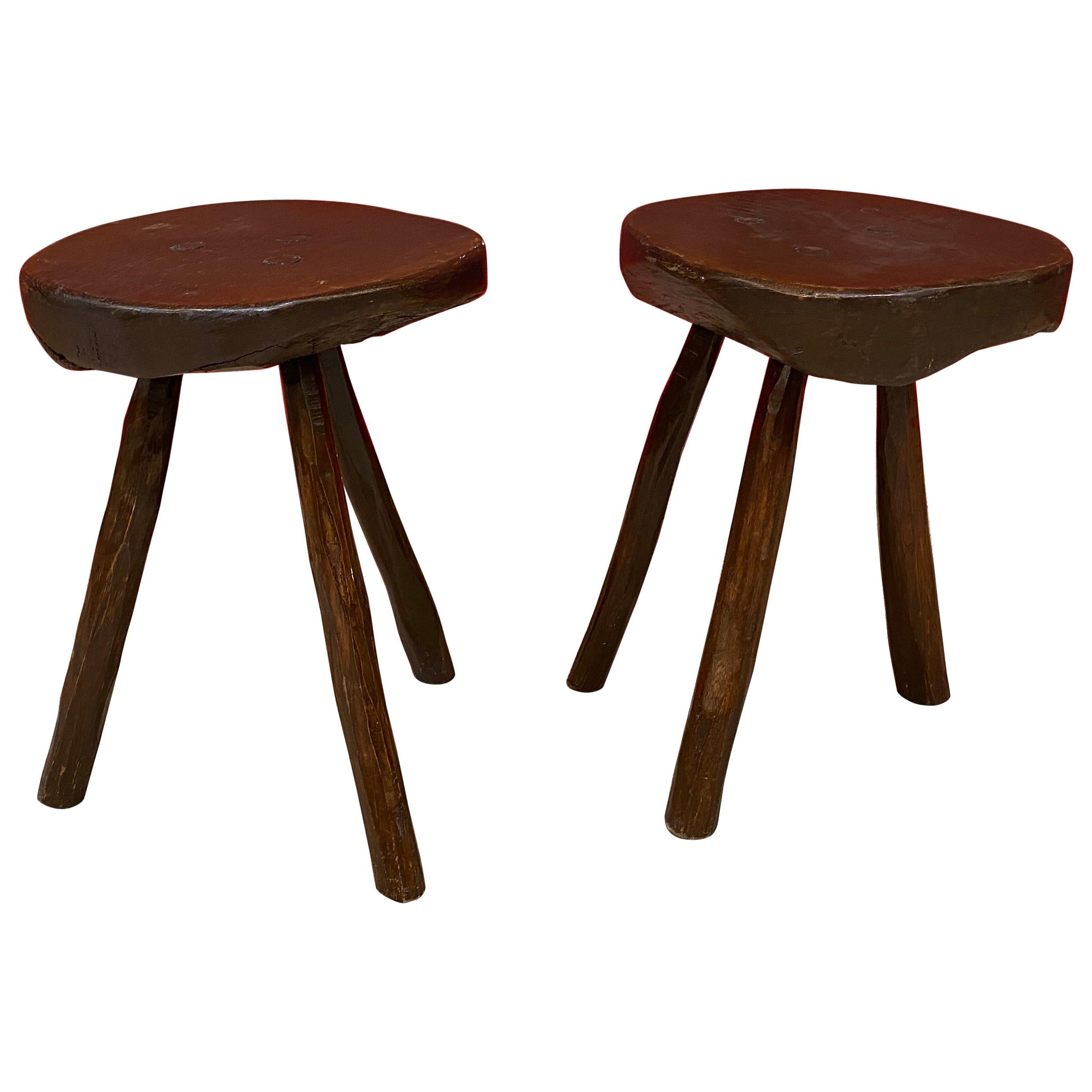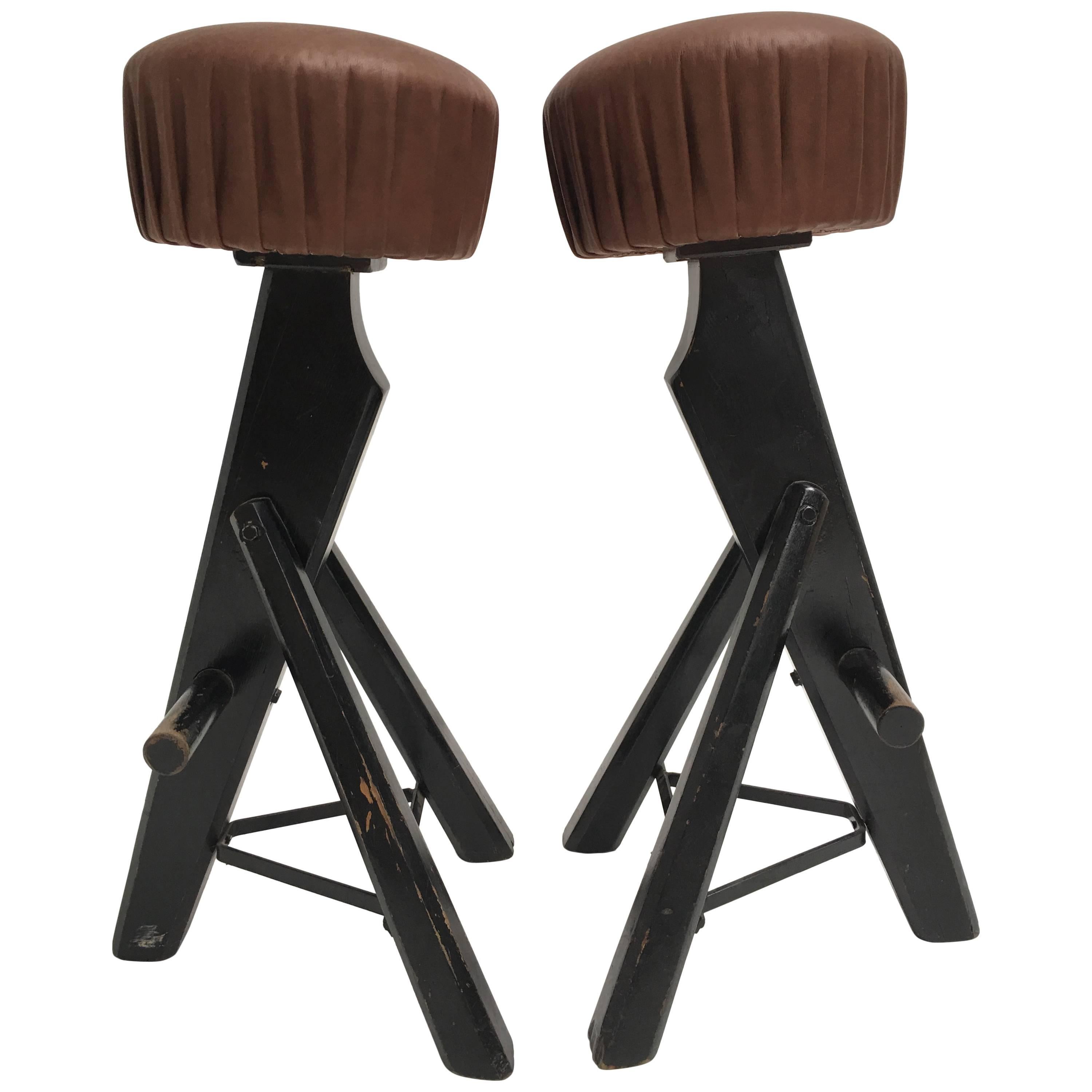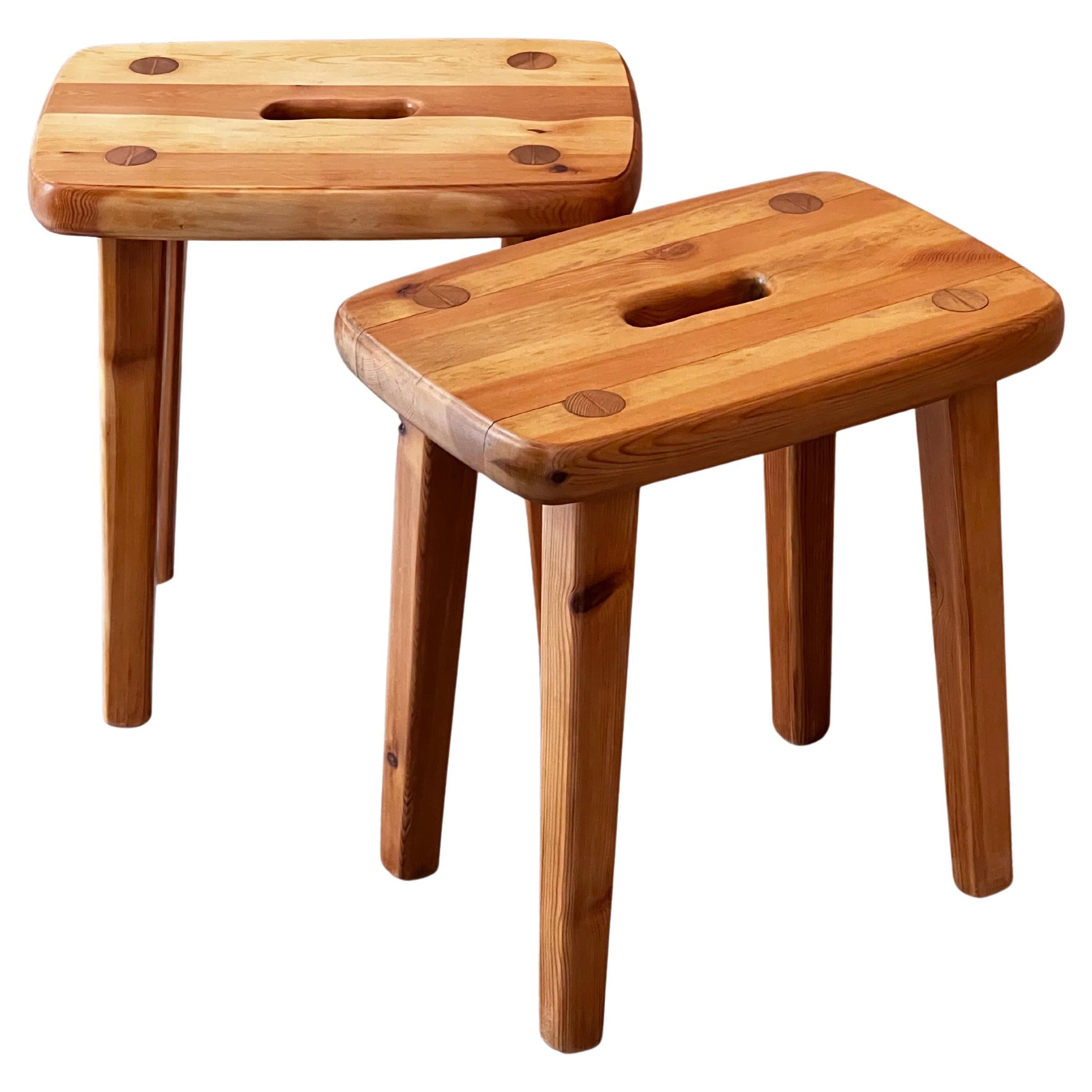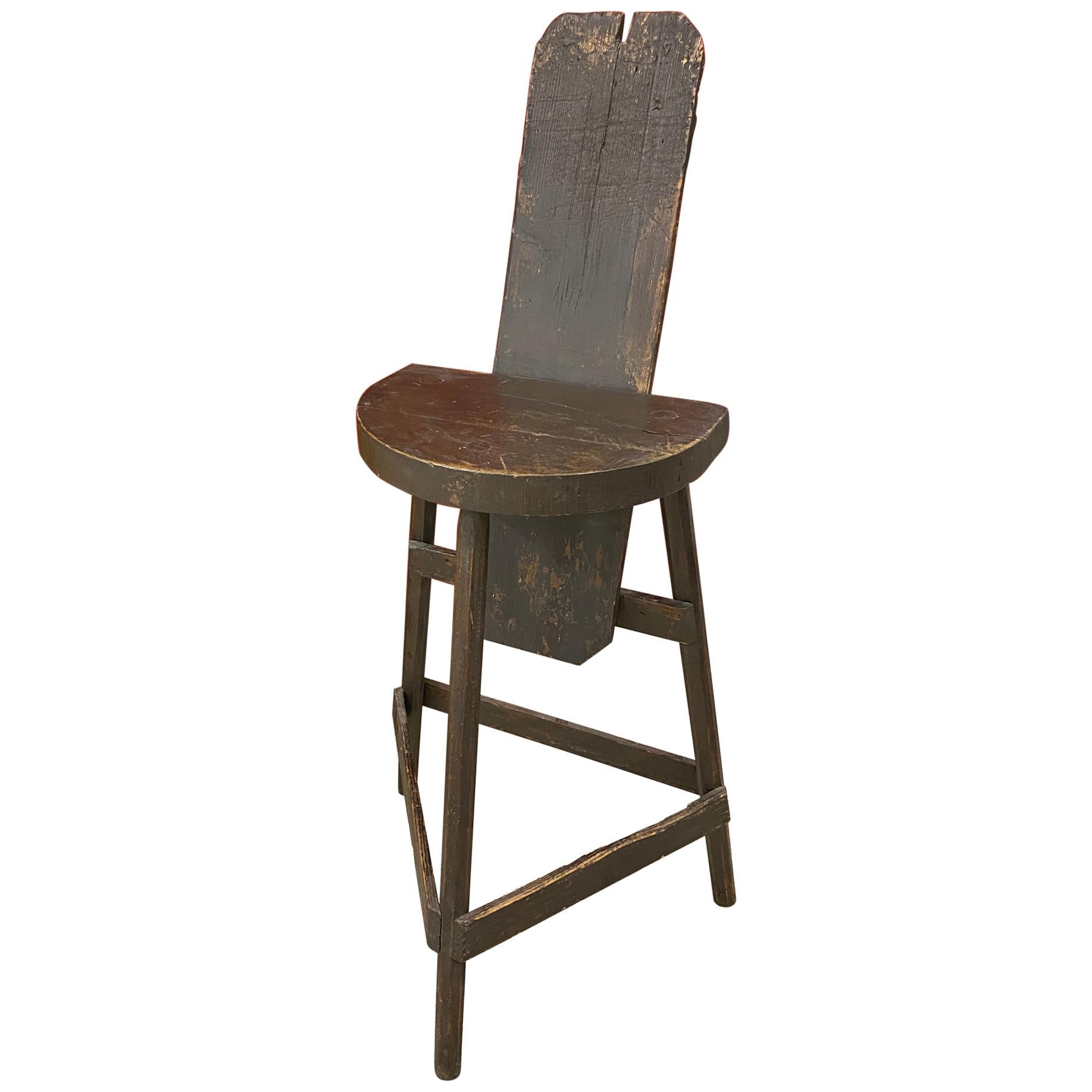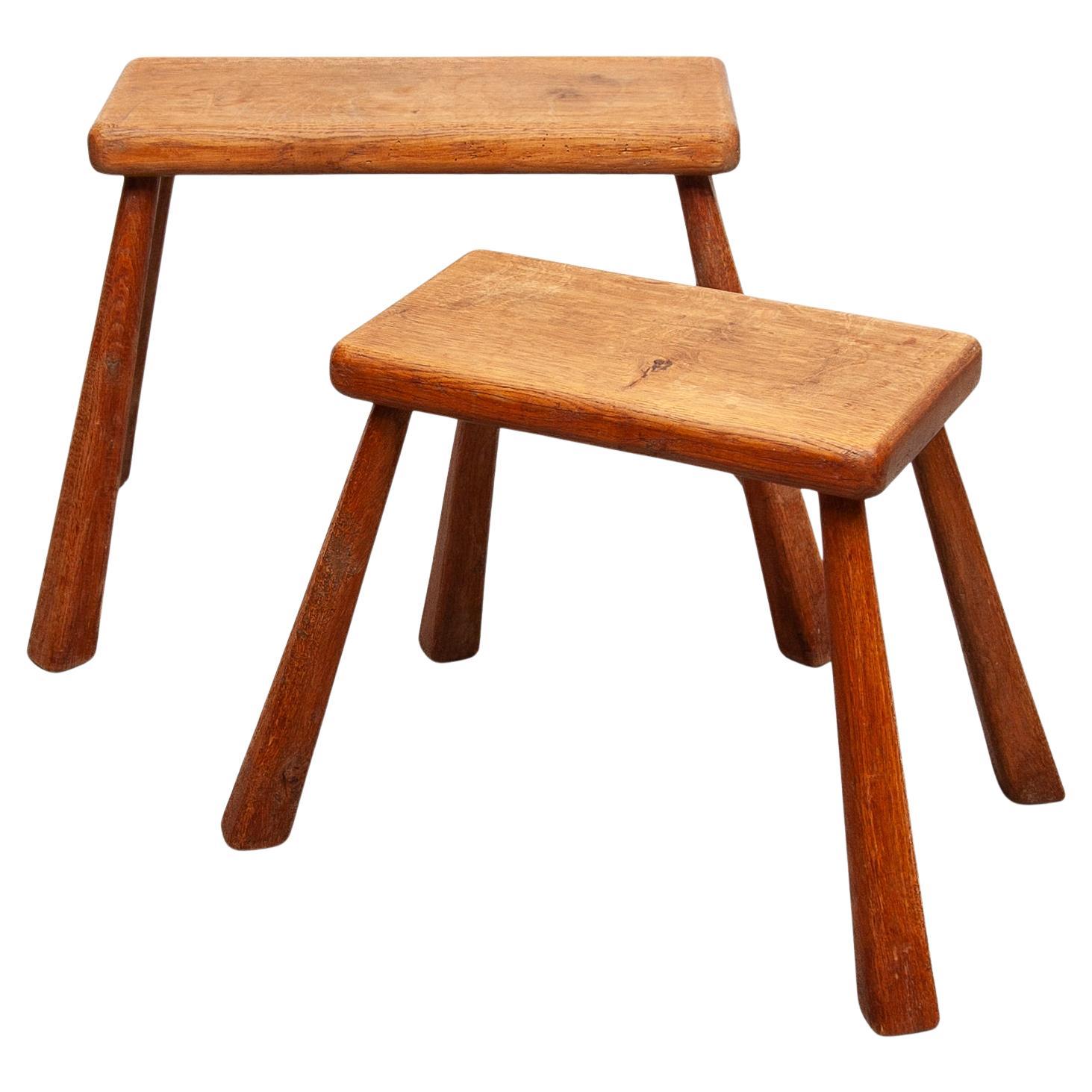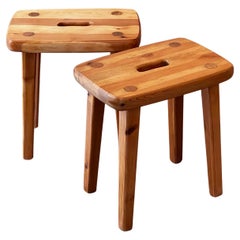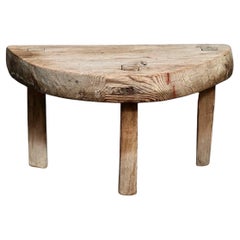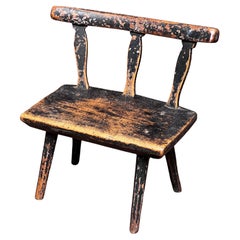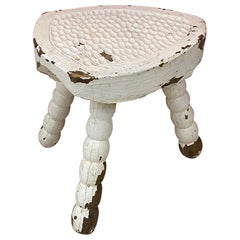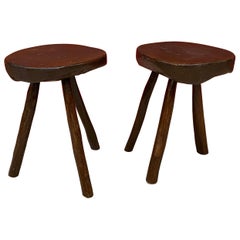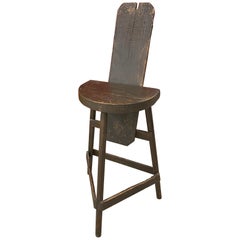Items Similar to Strong Dutch Stained Wooden Stool with cords circa 1950 Brutalist
Want more images or videos?
Request additional images or videos from the seller
1 of 9
Strong Dutch Stained Wooden Stool with cords circa 1950 Brutalist
About the Item
Cute Dutch stool. Very strong and good condition. Perfect as a side table or a normal seating with a table. Could be great as nightstand or next to a bath. Very decorative element.
_______________________________________________________
L'architecture brutaliste est un style architectural apparu dans les années 1950 au Royaume-Uni, dans le cadre des projets de reconstruction de l'après-guerre. Les bâtiments brutalistes se caractérisent par des constructions minimalistes qui mettent en valeur les matériaux de construction et les éléments structurels nus au détriment du design décoratif. Ce style fait généralement appel au béton ou à la brique apparents et non peints, à des formes géométriques angulaires et à une palette de couleurs principalement monochromes ; d'autres matériaux, tels que l'acier, le bois et le verre, sont également utilisés. Issu du mouvement moderniste, le brutalisme serait une réaction contre la nostalgie de l'architecture des années 1940. Derive de l'expression suédoise nybrutalism, le terme "nouveau brutalisme" a été utilisé pour la première fois par les architectes britanniques Alison et Peter Smithson pour leur approche pionnière du design. Le style a été popularisé dans un essai publié en 1955 par le critique d'architecture Reyner Banham, qui a également associé le mouvement aux expressions françaises "béton brut" et "art brut". Ce style, développé par des architectes tels que les Smithsons, le Hongrois Erno Goldfinger et le cabinet britannique Chamberlin, Powell & Bon, a été en partie préfiguré par le travail moderniste d'autres architectes tels que le Franco-Suisse Le Corbusier, l'Estonien-Américain Louis Kahn, l'Allemand-Américain Mies van der Rohe et le Finlandais Alvar Aalto. Au Royaume-Uni, le brutalisme s'est illustré dans la conception de logements sociaux utilitaires et bon marché, influencés par les principes socialistes, et s'est rapidement répandu dans d'autres régions du monde. Les conceptions brutalistes sont devenues plus communément utilisées dans la conception de bâtiments institutionnels, tels que les universités, les bibliothèques, les tribunaux et les hôtels de ville. La popularité du mouvement a commencé à décliner à la fin des années 1970, certains associant le style à la décadence urbaine et au totalitarisme. Le brutalisme a été historiquement polarisant ; des bâtiments spécifiques, ainsi que le mouvement dans son ensemble, ont suscité une série de critiques (souvent décrits comme "froids" ou "sans âme"), mais ont également obtenu le soutien d'architectes et de communautés locales (de nombreux bâtiments brutalistes sont devenus des icônes culturelles, obtenant parfois le statut de monuments classés). Au cours des dernières décennies, le mouvement a suscité un regain d'intérêt. En 2006, plusieurs architectes bostoniens ont demandé que le style soit rebaptisé "architecture héroïque" afin de l'éloigner des connotations négatives du terme "brutalisme".
- Similar to:Axel Einar Hjorth (Designer)Pierre Chapo (Artist)
- Dimensions:Height: 13.39 in (34 cm)Width: 10.63 in (27 cm)Depth: 11.03 in (28 cm)Seat Height: 18.12 in (46 cm)
- Style:Brutalist (Of the Period)
- Materials and Techniques:
- Place of Origin:
- Period:
- Date of Manufacture:1950
- Condition:Wear consistent with age and use. Minor fading. patina.
- Seller Location:Forest, BE
- Reference Number:1stDibs: LU8186238537812
About the Seller
5.0
Gold Seller
Premium sellers maintaining a 4.3+ rating and 24-hour response times
Established in 2007
1stDibs seller since 2023
30 sales on 1stDibs
Typical response time: <1 hour
- ShippingRetrieving quote...Shipping from: Forest, Belgium
- Return Policy
Authenticity Guarantee
In the unlikely event there’s an issue with an item’s authenticity, contact us within 1 year for a full refund. DetailsMoney-Back Guarantee
If your item is not as described, is damaged in transit, or does not arrive, contact us within 7 days for a full refund. Details24-Hour Cancellation
You have a 24-hour grace period in which to reconsider your purchase, with no questions asked.Vetted Professional Sellers
Our world-class sellers must adhere to strict standards for service and quality, maintaining the integrity of our listings.Price-Match Guarantee
If you find that a seller listed the same item for a lower price elsewhere, we’ll match it.Trusted Global Delivery
Our best-in-class carrier network provides specialized shipping options worldwide, including custom delivery.More From This Seller
View AllPair Swedish Brutalist pine stools, 1950s, Handmade fine quality refinished
By José Zanine Caldas, Axel Einar Hjorth
Located in Forest, BE
Handmade Swedish stools with massive slays of pine. It is a rectangular shaped with rounded edges. The joinery is really elegant. They were refinished and shows various shades of ho...
Category
Vintage 1950s Swedish Brutalist Stools
Materials
Hardwood, Pine
Swedish folk small wooden stool 18th/19th century Folk Art Peasant unique
By Axel Einar Hjorth, José Zanine Caldas
Located in Forest, BE
Unique Swedish small wooden stool made of massive pine circa the early/mid 1800. Lots of history, patina and traces of time. Very good condition. It’s a small one but a true eye cat...
Category
Antique Mid-18th Century Swedish Brutalist Stools
Materials
Pine
Swedish folk blue stool Dated late 1800 Folk Art Peasant Seating
By Axel Einar Hjorth, José Zanine Caldas
Located in Forest, BE
Unique Swedish stool made of massive pine circa the late 1800. Lots of history, patina and traces of time. Very good condition. Remarkable as a side table in any room. A true eye c...
Category
Antique 19th Century Swedish Brutalist Stools
Materials
Pine
$1,116 Sale Price
20% Off
Swedish folk small black fireplace stool 18th century Folk Art Peasant unique
By Axel Einar Hjorth, José Zanine Caldas
Located in Forest, BE
Unique Swedish small black stool made of massive pine and birch circa the mid 1700. Lots of history, patina and traces of time. Very good condition. ...
Category
Antique Mid-18th Century Swedish Brutalist Stools
Materials
Pine, Birch
Japanese antique pine stool 1800, handcrafted unique
By Axel Einar Hjorth, José Zanine Caldas
Located in Forest, BE
Unique Japanese pine stool. Lots of patina, it's a true beauty of minimal craftsmanship. Lightweight and easy to move. A true eye catcher in any interior.
__________________________...
Category
Antique 19th Century Japanese Japonisme Stools
Materials
Pine
Modernist Swedish massive pine stool in the taste of Carl Malmsten 1940s/50's
By Axel Einar Hjorth, Carl Malmsten
Located in Forest, BE
This is an elegant rectangular pine. Produced in Sweden around the 1950s. It is a beautiful shape, the grain is showing a high quality wood. The legs can be unscrewed. a beautiful r...
Category
Vintage 1940s Swedish Scandinavian Modern Stools
Materials
Pine
You May Also Like
Brutalist Stool, circa 1950
By Atelier Marolles
Located in Saint-Ouen, FR
Brutalist stool, circa 1950.
Category
Vintage 1950s French Brutalist Stools
Materials
Wood
Two Brutalist Oak Stools, circa 1950
By Atelier Marolles
Located in Saint-Ouen, FR
Two Brutalist oak stools, circa 1950.
price is by item
two are available
Category
Vintage 1950s French Brutalist Stools
Materials
Oak
Pair of Brutalist Black Stained Solid Oak and Brown Leather Bar Stools, 1970s
By Pierre Chapo
Located in bergen op zoom, NL
Pair of Brutalist design 1970s barstools with new top quality chocolate brown leather seats and foam.
The base is made of solid black stained oak wi...
Category
Vintage 1970s French Brutalist Stools
Materials
Metal
Brutalist Pine Stool, circa 1950
By Atelier Marolles
Located in Saint-Ouen, FR
Brutalist pine stool, circa 1950.
HS 80
Category
Vintage 1950s French Stools
Materials
Oak
Brutalist Alpine Stools, 1950s
Located in Antwerp, BE
Set of two brutalist alpine solid wooden stools, sober design with a good stability. Can be used as a set of stools by a fireplace or as a set of side tables in a modern interior wit...
Category
Vintage 1950s French Brutalist Stools
Materials
Wood
Brutalist Stool, circa 1960
Located in Meulebeke, BE
Brutalist stool made of solid wood with some nice patina on the wood.
Category
Vintage 1960s Belgian Brutalist Stools
Materials
Wood
Recently Viewed
View AllMore Ways To Browse
Ame Table
Guillerme Chambron Bedside Tables
Gunnar Nylund Bird
Gurgle Jugs
Gustavian Bathroom Vanity
Gustavian Dressing Table
Gustavian Floor Clock
Guy Chaddock Furniture
Guy Chaddock
Gym Poster
H Beard Silver
Haberdashers Table
Haiti Wood Table
Hallmark Ora
Hamilton File Cabinet
Hamilton Mfg Co Antique
Hamilton Printers Table
Hammered Antique Reed And Barton
